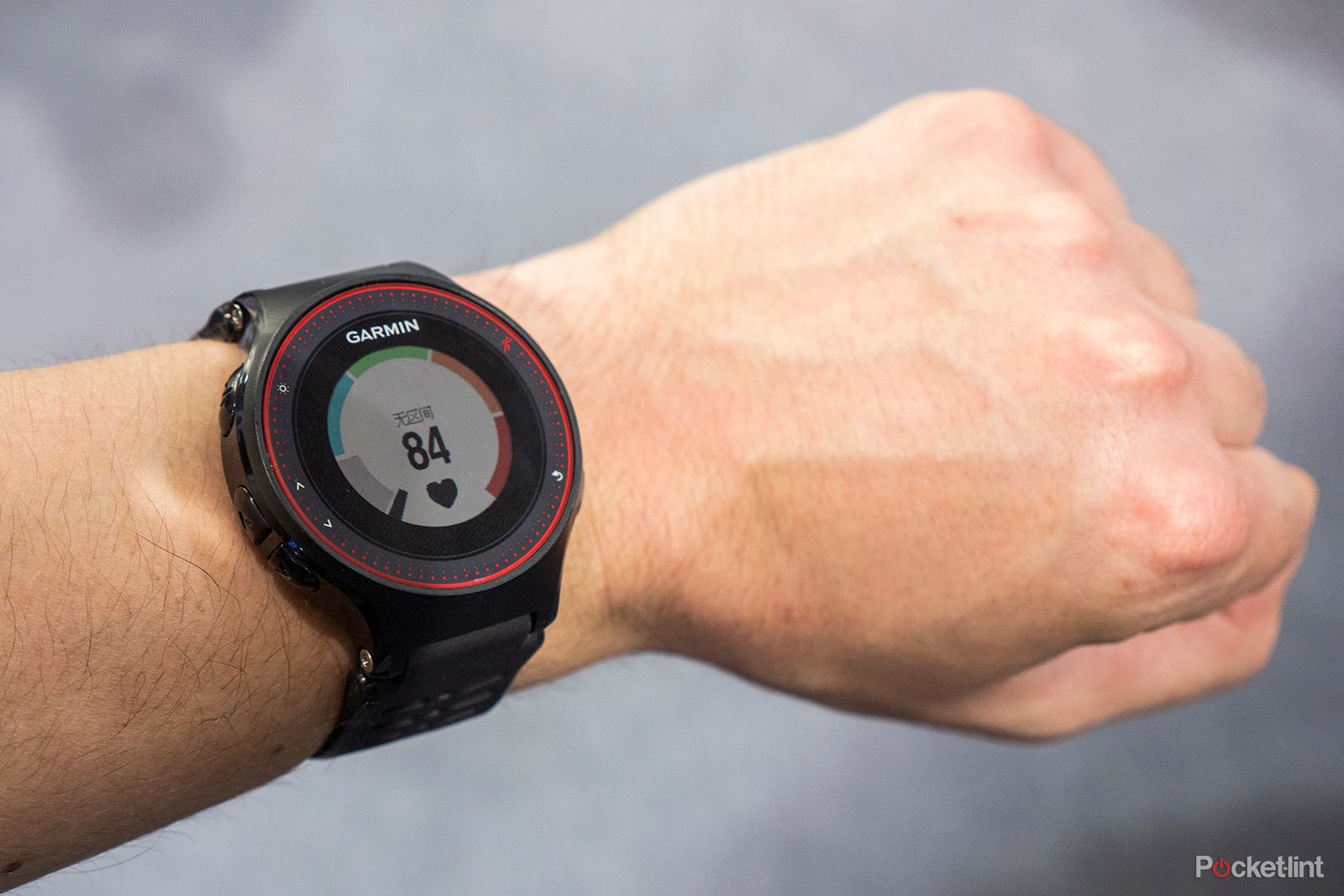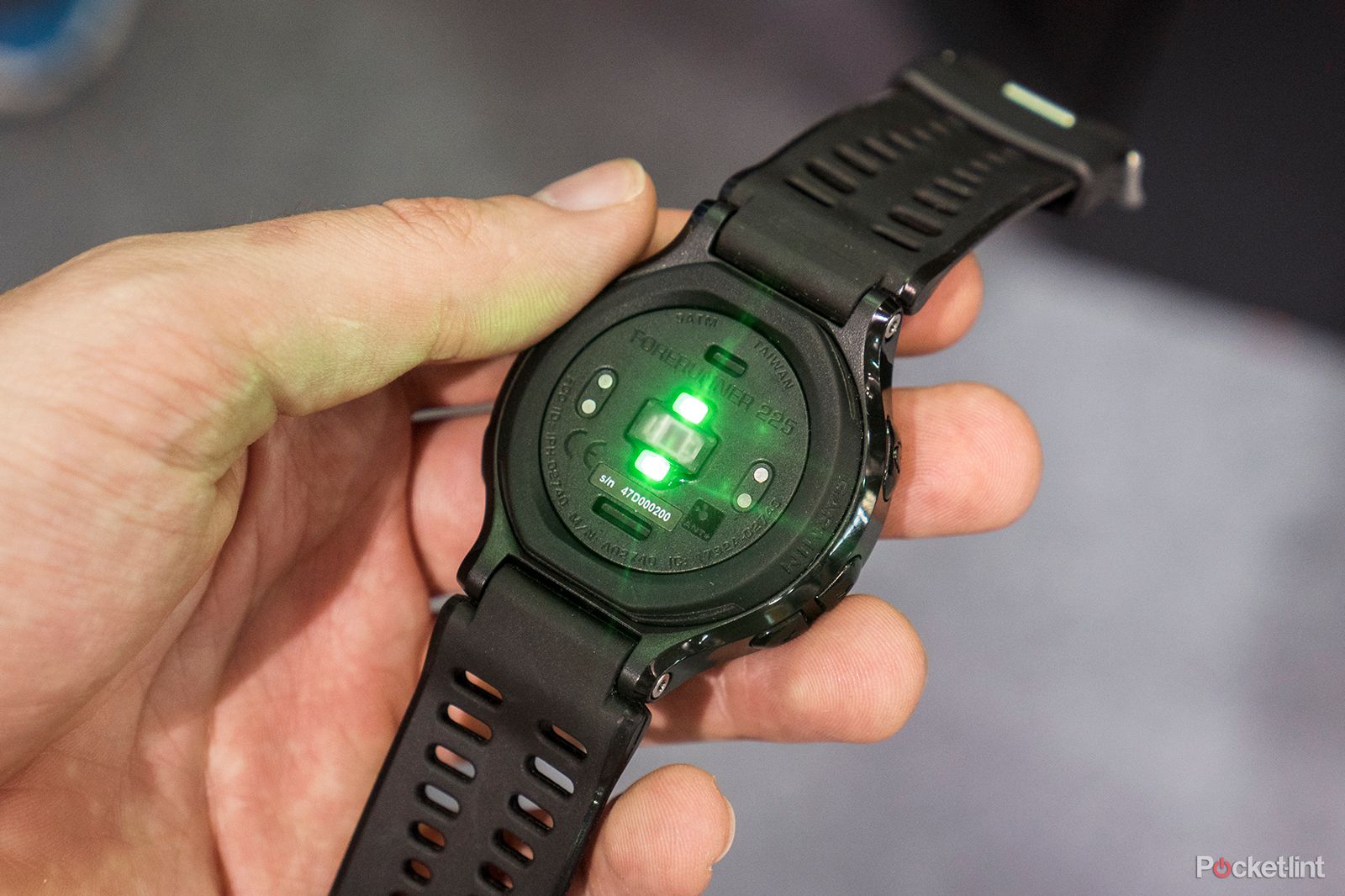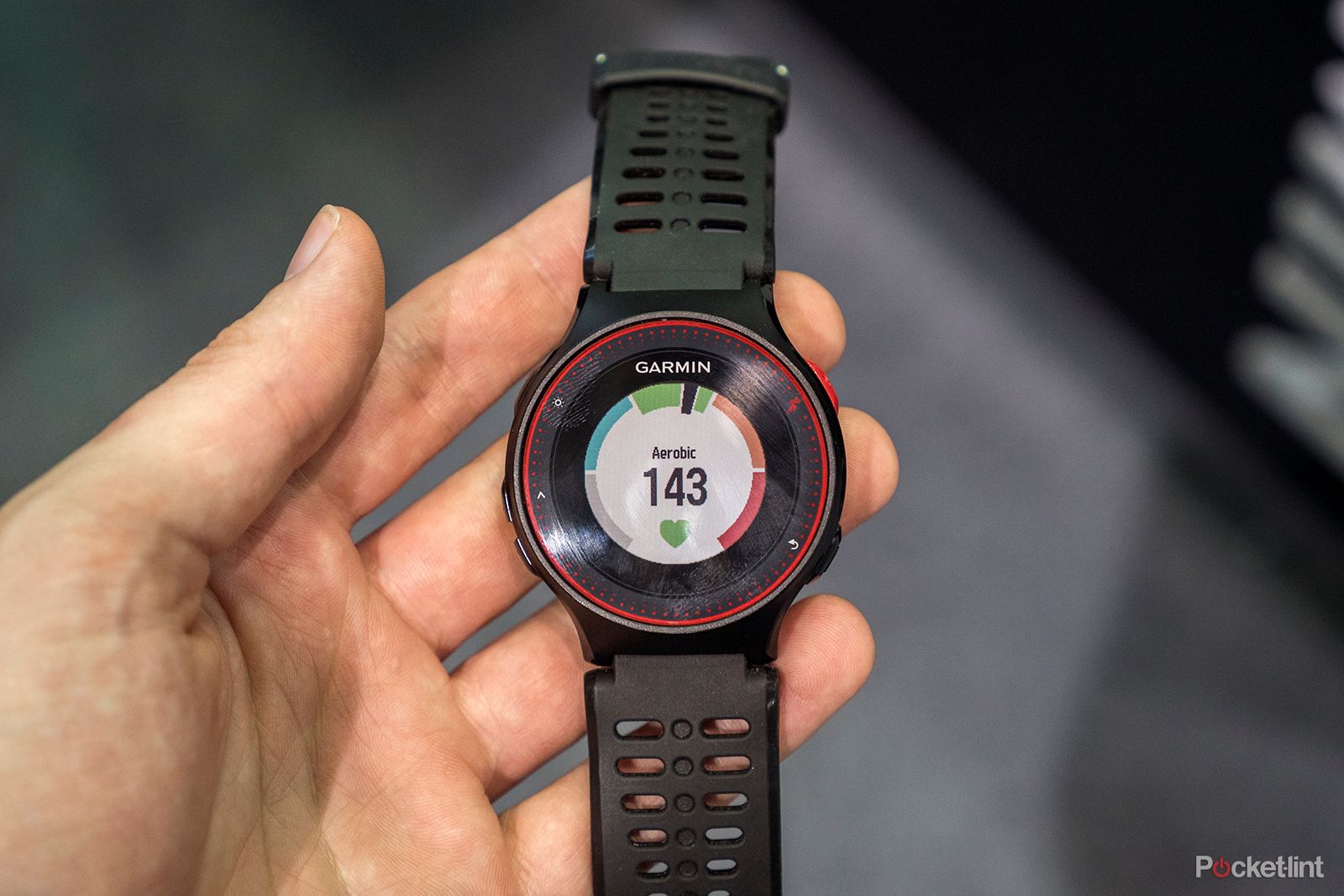Finally Garmin has taken the plunge and released its first running watch with a built-in heart-rate sensor, the Forerunner 225. We got to handle one at CES Asia to see whether it's the one everyone's been waiting for.
The Forerunner 225 isn't the device to be found at the top of Garmin's fitness products stack though. The rounded watch face looks plasticky, lacking the premium finish of the top-spec Forerunner 920XT.
Different products for different needs, but with built-in heart-rate monitoring sorely lacking from the company's line-up before now, it's a surprise the feature hasn't made it into a fuller range of new devices.
Anyway, back to the product at hand. If you flip the Forerunner 225 over, you'll see two green lights - which are used to optically measure your pulse by calculating the difference of blood-flow seen between the two points - sitting slightly recessed in a rubber lip to prevent light leak for a more accurate read.
Unlike an Android Wear smartwatch, the likes of which rarely maintain accurate heart rate reads, the Forerunner 225 quickly located our pulse once strapped to our wrist. The rubber strap feels comfortable considering the materials, and while the watch face may be deemed too large for some, we think it provides ample viewing space for a quick glance when out on a run. It's a really light device too - much lighter than the TomTom Multi-Sport Cardio that we've been using for a number of months.
In all the excitement ,our uncharacteristically high pulse rate of 84bpm slipped down to a more natural level, showing in real-time on the display. Mio provides the heart-rate sensor, which is a reliable source based on its track record.
Even with overhead lighting looming, it's easy to read the Forerunner 225's face, but should it get dark, then a dedicated backlight can be switched on via a single press of the sun-symbol button. Other buttons are marked out on the watch face itself, rather than having painted-on markings on them, which might not look as well conceived side-on, but we doubt you'll spend much time staring directly at them from such angles.
The most immediate take-away from the face's design are those clearly marked coloured "zones", which Garmin calls HR Zone Gauge. After firing up an running session - via a press of the red start/stop button, which is positioned away from the wrist to avoid accidental presses - a digital gauge marks to your given zone position, relative to heart rate (and your fitness, based on the data input via the Garmin app). All without the need for a chest strap monitor (although within the options it is possible to connect to one via ANT+, should you want to).
Cycling through these options using the up, down, back and start/stop buttons reveals various additional viewing modes and options, such as two or three metrics rather than just one, or setting goals rather than just freestyle running.
However, only running is available as an activity, which seems a little odd given the Forerunner 225's waterproofing to depths of 50 metres and the ANT+ connectivity potentially boding well for swimming and cycling.
That, combined with its £240 price point, shows that Garmin is still selling itself as a premium brand. The TomTom, by comparison, offers more features and for less money overall in the current market. We love that Garmin has finally pushed the heart-rate monitor into a device, but await its top-spec product - presumably a 920XT replacement - with even more baited breath.



